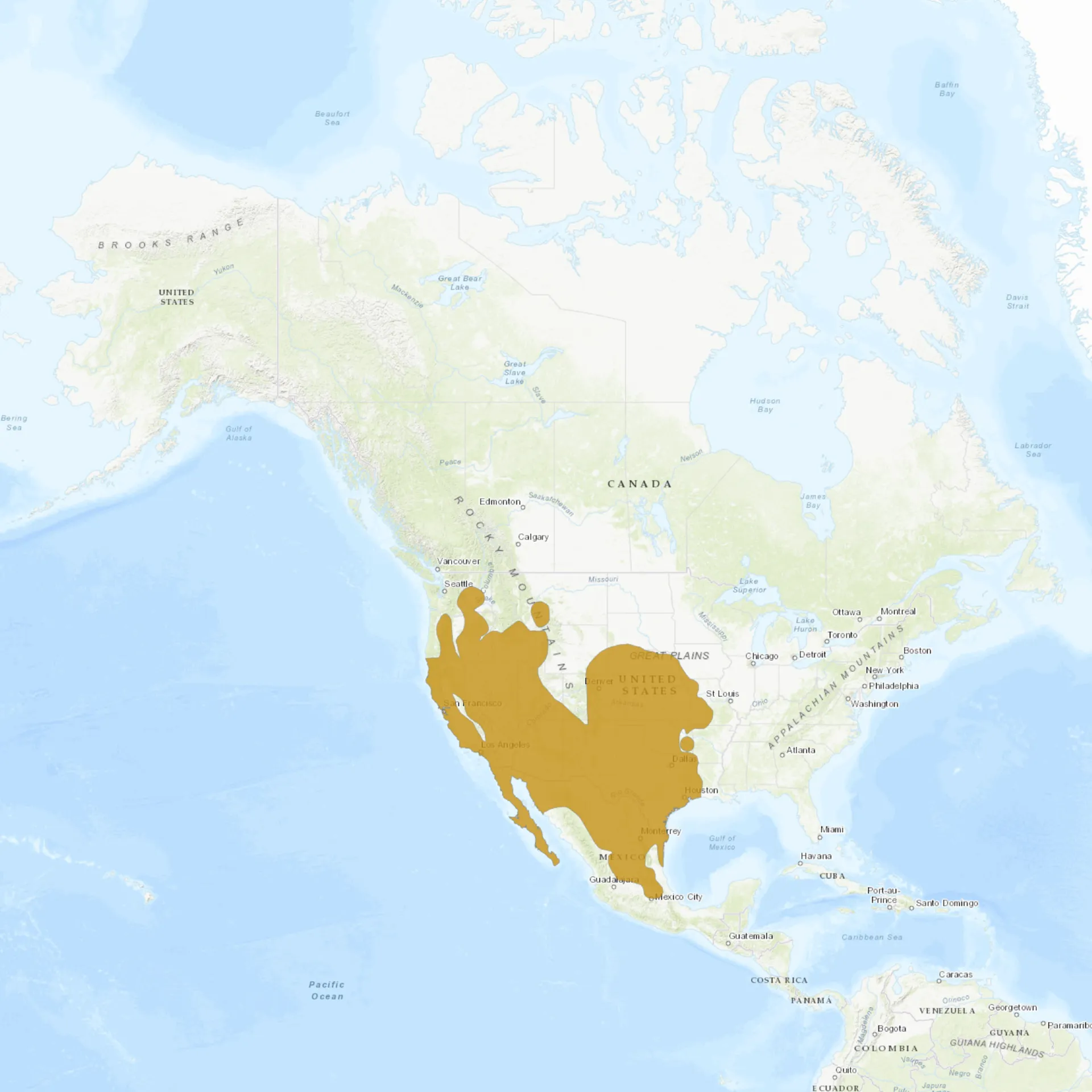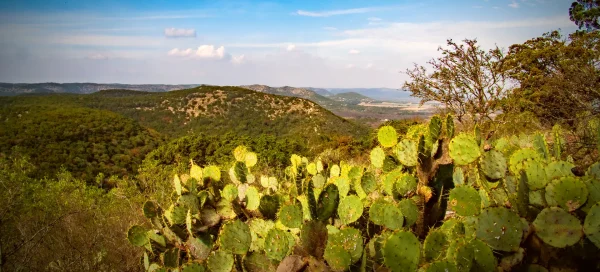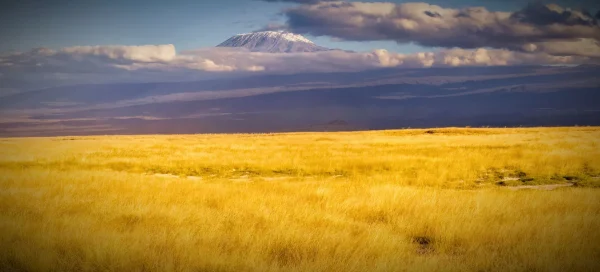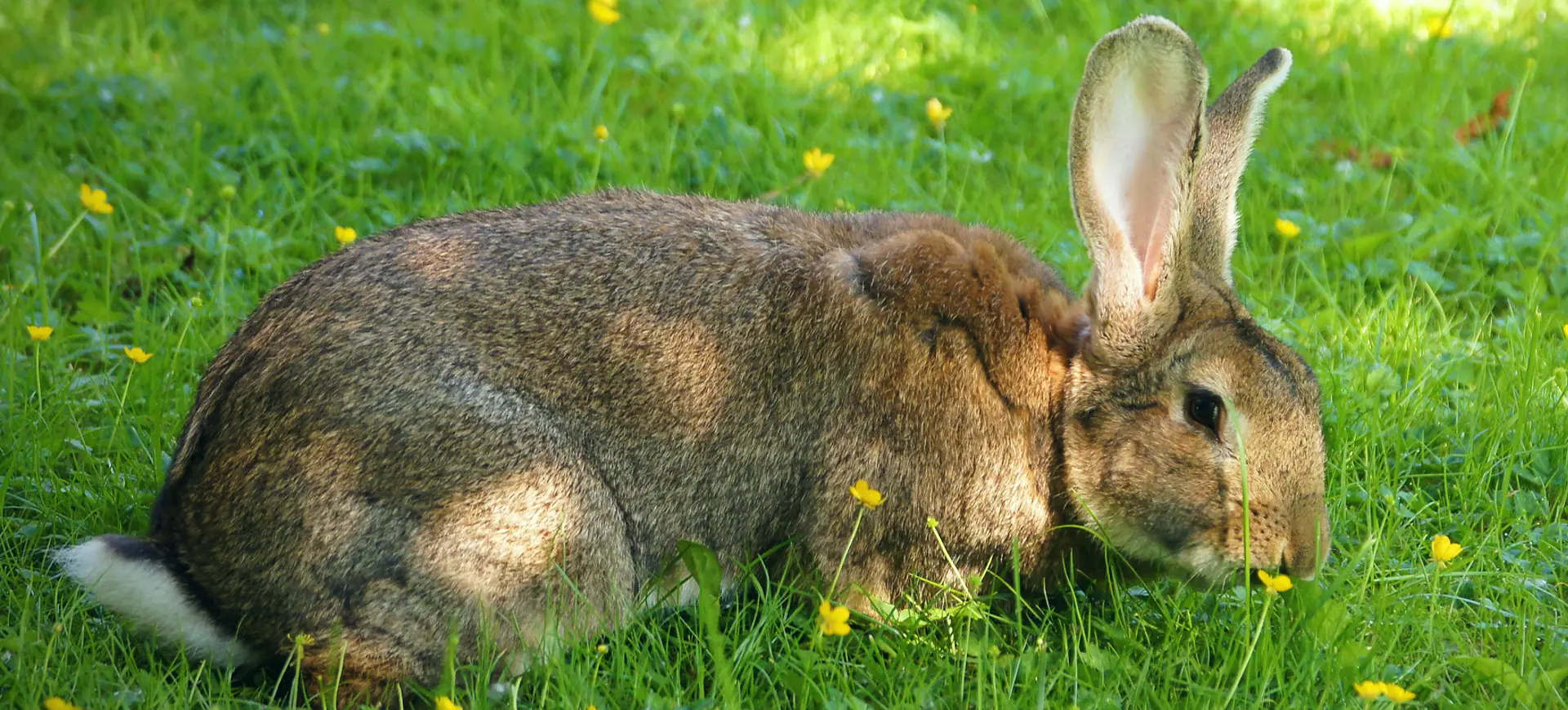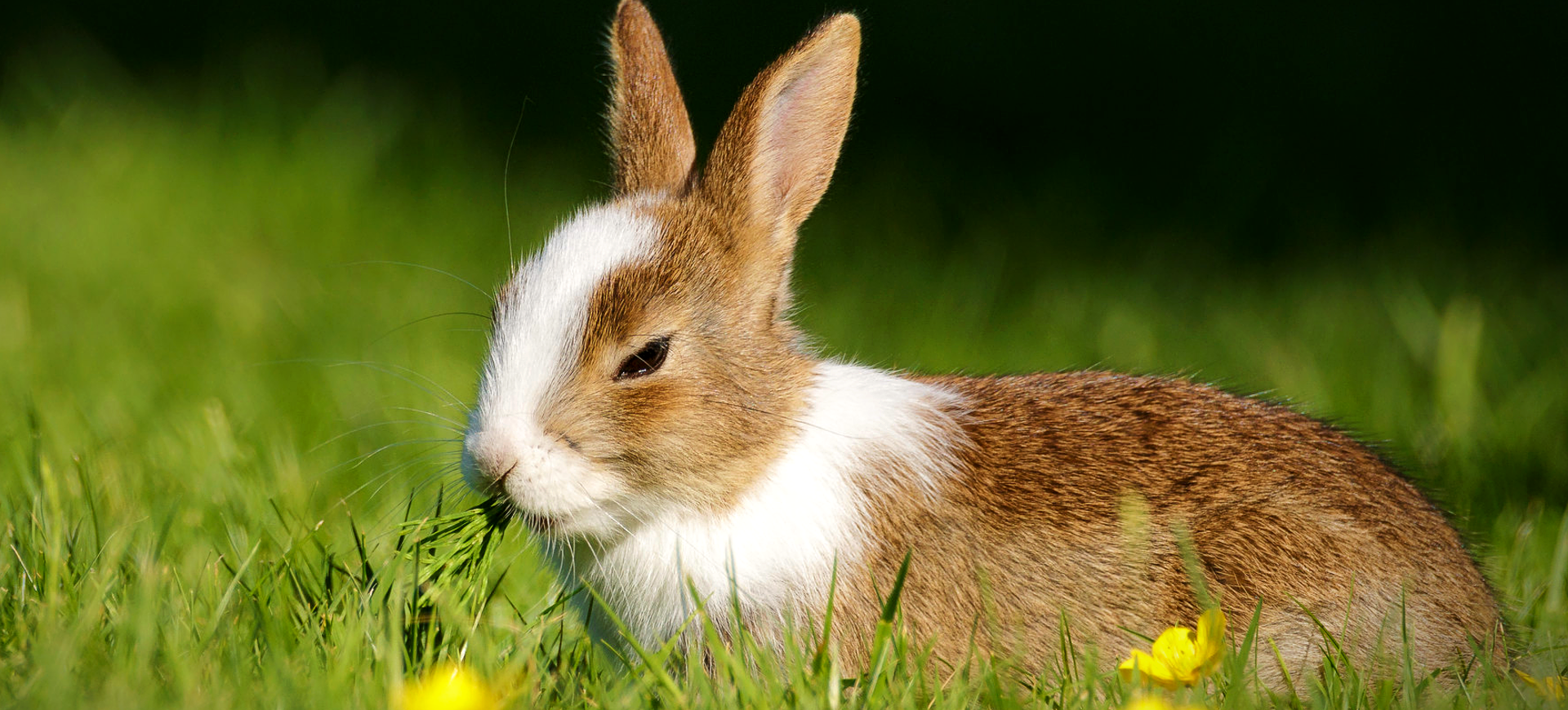Overview
The black-tailed jackrabbit (Lepus californicus), also known as the American desert hare, is a common hare in North America. It is well-adapted to arid environments, with long ears that help regulate body temperature and a lean body built for speed. Unlike true rabbits, jackrabbits do not burrow extensively and instead rely on their agility to escape predators. Their powerful hind legs allow them to reach impressive speeds and rapidly change direction when threatened.
Black-tailed jackrabbits are primarily nocturnal, meaning they are most active at night to avoid the day’s heat. They are highly alert and rely on their large eyes and sensitive ears to detect approaching threats. They can leap great distances and reach up to 40 mph (64 km/h) when alarmed. Their keen senses and evasive abilities make them difficult targets for predators such as coyotes, hawks, and foxes.
This species plays an essential role in its ecosystem by serving as a prey species and a grazer that helps maintain plant populations. They have a high reproductive rate, with females capable of giving birth to multiple litters yearly. Their populations fluctuate depending on food availability and predator pressure. Despite being heavily hunted by various predators, they remain widespread due to their rapid reproduction and adaptability.
Taxonomy
Kingdom
Phylum
Class
Order
Family
Genus
Species
Type
Current distribution:
Black-tailed jackrabbits are native to western North America, ranging from southern Canada through the western and central United States into Mexico. They are particularly abundant in states such as California, Texas, Arizona, and Nevada, where suitable open habitats exist. Their range extends into Mexico, where they are found in desert and scrubland environments. Although populations fluctuate, they remain widespread due to their adaptability.
They have been introduced to some non-native regions, where they have established stable populations. In some areas, they are considered an agricultural pest due to their high reproductive rates and feeding habits. Their populations tend to rise and fall in cycles, often linked to food availability and predator populations. Despite being preyed upon by numerous predators, they thrive in various environments.
Physical Description:
Black-tailed jackrabbits are large, running hares with strong hind legs, large eyes, and characteristic long ears with black tips. Their fur color varies with season and environment but typically ranges from a mottled dark gray to light gray or even a rufous brown. They have a characteristic black stripe that runs down the center of their back, but their most distinguishing feature is their large, black-topped tail from which they derive their name.
The body size of the black-tailed jackrabbit decreases from west to east across its range. This is likely due to climate, habitat, or evolutionary history differences. Males and females are virtually indistinguishable from each other, both bearing the same physical characteristics and size. They have four incisor teeth (unlike rodents, which have two) and strong, sharp claws for digging.

Lifespan: Wild: ~5 Years || Captivity: ~9 Years

Weight: Male: 3-7 lbs (1.4-3.2 kg) || Female: 3-7 lbs (1.4-3.2 kg)

Length: Male: 17-21 in (43-53 cm) || Female: 18-22 in (46-56 cm)

Height: Male: 18-24 in (45-61 cm) || Female: 18-24 in (45-61 cm)

Top Speed: 30 mph (48 km/h)
Characteristic:
Native Habitat:
Black-tailed jackrabbits inhabit open landscapes, including deserts, grasslands, and scrublands. They thrive in arid and semi-arid regions, using vegetation for cover and relying on their speed to evade predators. Unlike burrowing animals, they create shallow depressions in the soil called “forms” to rest and hide during the day. Their habitat selection is influenced by food availability and the presence of predators.
They are commonly found in areas with sparse vegetation, which allows them to detect predators from a distance. They avoid densely forested regions and prefer habitats with shrubs and open ground. Their adaptability allows them to survive in extreme temperatures and with limited water sources. They can sometimes be seen in parks, agricultural fields, and along roadways in urban areas.
Biogeographical Realms:
Continents:
Countries:
Diet:
Diet & Feeding Habits:
Black-tailed jackrabbits are herbivores, feeding primarily on various plant materials, including grasses, leaves, stems, and bark. Their specialized digestive systems allow them to extract nutrients efficiently from fibrous plant matter. In dry conditions, they consume cacti and other succulents to obtain moisture. They practice coprophagy, consuming their feces to re-digest food and maximize nutrient absorption.
Their diet changes with the seasons, shifting from tender greens in spring and summer to woody shrubs and dried vegetation in fall and winter. They prefer young, tender plant shoots but will consume tougher vegetation when food is scarce. Jackrabbits rely on their excellent sense of smell to locate food sources in their environment. Due to their high metabolic rate, they must eat frequently to sustain their energy levels.
Mating Behavior:
Mating Description:
The mating system of the black-tailed jackrabbit is polygynous, meaning one male mates with multiple females. Mating typically occurs year-round but peaks between February and May. Courtship behavior includes males chasing females, and when a female is ready to mate, she will signal this to a male by performing leaps into the air.
Females usually have 1 to 4 litters per year, with each litter containing 1 to 6 young, although the average is around 3. The gestation period lasts about 42 to 47 days. Young are born fully furred, with their eyes open, and they can hop around shortly after birth, a condition referred to as precocial. The mother does not construct a nest, and the young are left to fend for themselves after a few days, reaching sexual maturity around seven months.
Reproduction Season:
Birth Type:
Pregnancy Duration:
Female Name:
Male Name:
Baby Name:
Social Structure Description:
Black-tailed jackrabbits are solitary animals, and aside from the mating season, they do not typically engage in social behavior. Each jackrabbit maintains a home range but does not defend its territory.
While not particularly social, they have some social structure, with dominance hierarchies established through chasing and fighting. Males tend to be more aggressive than females, particularly during the breeding season when competition for mates is high.
Groups:
Conservation Status:
Population Trend:
Black-tailed jackrabbits are abundant throughout their range, spanning the western and central United States and Mexico. While their population density varies depending on the specific habitat and region, they are typically most common in prairie grassland and desert regions.
The population trend of black-tailed jackrabbits is generally stable, although local fluctuations can occur based on changes in habitat and predation. These rabbits are an important prey species for many animals, and their populations can impact the abundance of predator species.
Population Threats:
Despite being classified as “Least Concern” by the IUCN, black-tailed jackrabbits face several threats. Habitat destruction and fragmentation due to agricultural development pose significant risks. They are also hunted for sport and are sometimes considered pests due to their impact on crops and gardens.
Another significant threat to black-tailed jackrabbits is disease, including Tularemia, caused by bacteria and the Rabbit Hemorrhagic Disease Virus (RHDV). Both diseases can cause significant mortality in populations.
Conservation Efforts:
Given their widespread distribution and abundance, the black-tailed jackrabbit is not the focus of major conservation efforts. Nonetheless, the conservation of their habitats is essential for them and the numerous other species that depend on these environments.
In areas where they are considered pests, there have been attempts to manage populations through hunting or the introduction of predators. However, these management efforts must be carried out sustainably, ensuring the long-term survival of black-tailed jackrabbit populations.
Additional Resources:
Fun Facts
- Black-tailed jackrabbits are not rabbits but hares.
- They are capable of reaching speeds up to 30 mph.
- Jackrabbits have large ears that help them lose heat and stay cool in desert environments.
- Unlike many mammals, black-tailed jackrabbits are most active at night.
- Their large, powerful hind legs allow them to leap up to 20 feet in a single bound.
- A female jackrabbit can have multiple litters in a year, each containing up to six young.
- Young jackrabbits are born fully furred and with their eyes open, and they can hop around shortly after birth.
- Black-tailed jackrabbits practice reflection, consuming their fecal pellets to extract more nutrients from their food.
- Despite their name, black-tailed jackrabbits are hares.
- Black-tailed jackrabbits play a crucial role in the ecosystem as a prey species, impacting the abundance of predator species.


